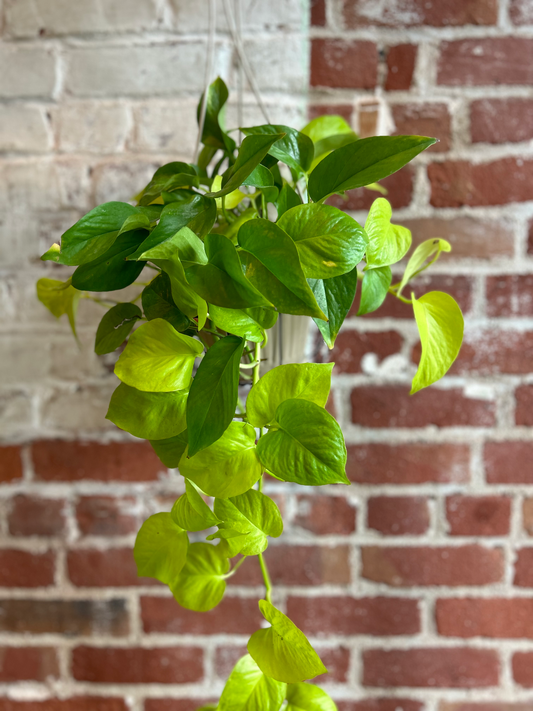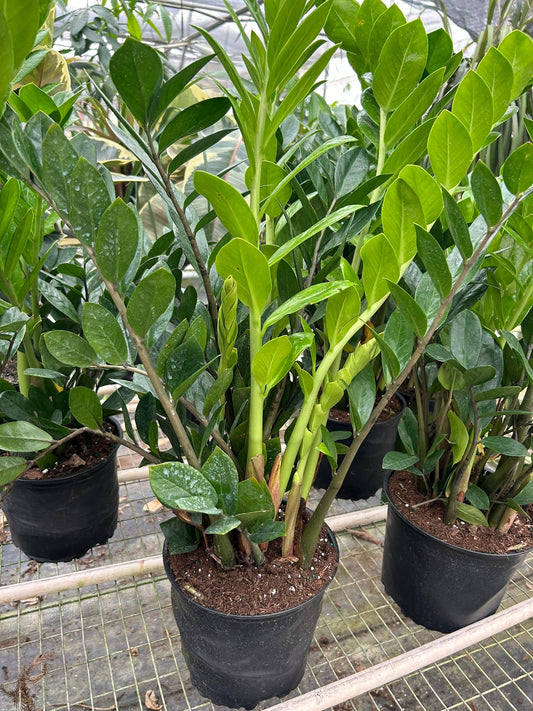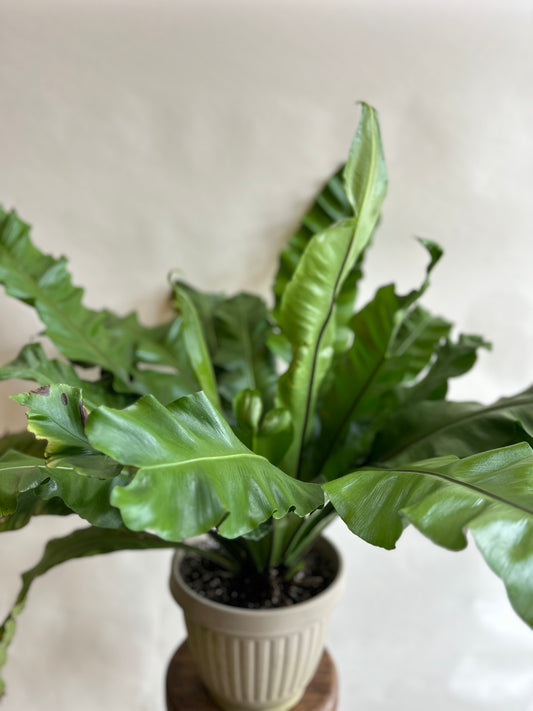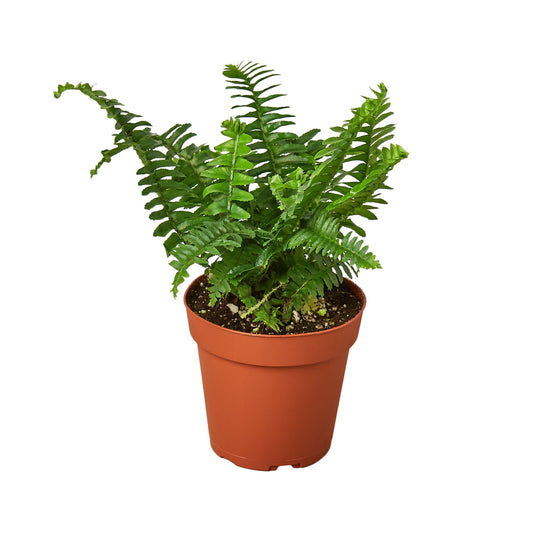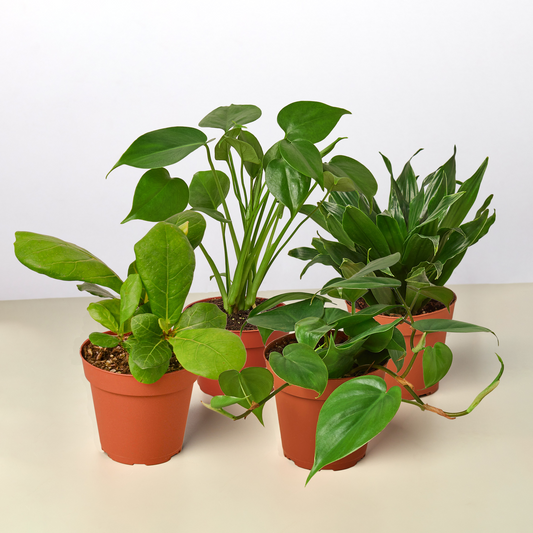Are Song Of India Plants Toxic to Cats?
Cafe Planta Team
One of the joys of being a plant lover is filling your home with beautiful greenery. But if you're a cat parent, you know that certain plants can pose a risk to your furry friends. If you've set your sights on the Song of India plant, you might be wondering if this lovely plant is safe for your feline companions.
In the following sections, we'll discuss whether the Song of India plant is toxic to cats, and what that means for cat owners. We'll also touch on how to care for this plant, so you can make informed decisions about bringing it into your home. Let's get started!
Is the Song of India Plant Toxic to Cats?
The Song of India plant, also known as Dracaena reflexa, is a popular choice for its striking, variegated leaves and easy care requirements. However, when it comes to our feline friends, there's a bit of a catch. According to the ASPCA, the Song of India plant is indeed toxic to cats. Ingestion can lead to symptoms such as vomiting, lack of appetite, and drooling. In some cases, more serious symptoms can occur, such as depression or an increased heart rate.
It's always important to be cautious with houseplants and pets. Cats are naturally curious creatures, and the temptation to nibble on leaves can be strong. Even if your cat has never shown interest in your plants before, it's still wise to err on the side of caution.
Interestingly, the same compounds that make the Song of India plant toxic to cats also make it mildly toxic to dogs. So, if you're a multi-pet household, you'll want to be extra vigilant about keeping this plant out of reach.
Signs of Poisoning in Cats
If your cat has nibbled on a Song of India plant, you might notice some telltale signs of poisoning. While it's not a guarantee that they'll experience symptoms, it's important to know what to watch for. Common symptoms include:
- Vomiting
- Diarrhea
- Drooling
- Lethargy
- Lack of appetite
- Increased heart rate
In severe cases, your cat might experience tremors or seizures. These symptoms can be distressing, both for your pet and for you as their caregiver. If you suspect your cat has ingested any part of a Song of India plant, it's crucial to contact your veterinarian immediately. They can provide guidance on the best course of action, which might include bringing your cat in for a check-up or monitoring them at home.
Remember, it's always better to be safe than sorry. Even if your cat seems fine, a quick call to the vet can give you peace of mind.
How to Keep Cats Away from Toxic Plants
Keeping your feline friends safe from toxic plants requires a bit of creativity and vigilance. Here are some strategies you might find helpful:
- Placement: Position your plants in areas your cat can't easily reach. This might mean using high shelves or hanging planters.
- Repellents: Some natural scents, like citrus or peppermint, can deter cats. You can place peels or cotton balls soaked in essential oils around your plants (but not on them, as essential oils can also be harmful to cats if ingested).
- Distractions: Provide your cat with their own plants to chew on, like cat grass or catnip. This can satisfy their urge to nibble without risking their health.
- Training: Use positive reinforcement to teach your cat to stay away from plants. This might involve redirecting them with treats or toys when they approach the plants.
Combining these techniques can help ensure that your cat stays safe, while still allowing you to enjoy your indoor garden.
Caring for Your Song of India Plant
Now that we've addressed the potential risks to your cat, let's focus on how to care for the Song of India plant. This plant is a favorite among plant lovers because it's relatively low-maintenance, making it a great choice for both beginners and seasoned green thumbs.
Light Requirements
The Song of India prefers bright, indirect light. Too much direct sunlight can scorch its leaves, while too little light can cause the vibrant colors to fade. A spot near a window with filtered light is ideal. If you notice the leaves losing their variegation, it might be a sign that your plant needs more light.
Watering
When it comes to watering, the Song of India is quite forgiving. It's best to let the top inch of soil dry out between waterings. Overwatering can lead to root rot, so it's better to err on the side of underwatering. During the growing season (spring and summer), you might water more frequently. In the fall and winter, you can reduce the frequency as the plant's growth slows down.
Soil and Potting
A well-draining potting mix is essential for the Song of India. You can use a standard houseplant potting mix, or create your own blend with equal parts potting soil, perlite, and peat moss. Ensure your pot has drainage holes to prevent water from accumulating at the bottom.
Repotting every two to three years is usually sufficient, although you might need to do it more often if your plant is growing rapidly. When repotting, choose a pot that is one size larger than the current one.
Dealing with Pests and Diseases
Like many houseplants, the Song of India is susceptible to pests such as spider mites, mealybugs, and aphids. Regularly inspecting your plant can help catch infestations early. If you do notice pests, you can often remove them by gently wiping the leaves with a damp cloth or using insecticidal soap.
Fungal diseases can also be an issue, particularly if the plant is overwatered or the humidity is too high. To prevent fungal problems, ensure good air circulation around your plant and avoid getting the leaves wet when watering.
Keeping your plant healthy and stress-free is the best way to prevent pest and disease issues. A happy, well-cared-for plant is less likely to succumb to these problems.
Designing with the Song of India Plant
The Song of India is not just a pretty face—it's also a versatile addition to your home's decor. With its striking yellow and green leaves, it can add a pop of color and texture to any room.
Consider pairing it with plants that have contrasting foliage, like the dark leaves of a rubber plant or the delicate fronds of a fern. This can create a visually interesting display that draws the eye.
You can also use the Song of India to add height to a plant arrangement. Its upright growth habit makes it a great choice for the center of a grouping, with shorter plants around the base. Alternatively, you can let it stand alone as a statement piece in a decorative pot.
Remember to consider the light conditions in your home when choosing where to place your plant. The right spot can make all the difference in keeping your Song of India healthy and vibrant.
Alternatives to Song of India for Cat Owners
If you're concerned about the safety of having a Song of India plant around your cat, there are plenty of other beautiful, non-toxic options to consider. Here are a few pet-friendly alternatives:
- Spider Plant: A hardy, easy-to-care-for plant that is safe for cats and adds a touch of greenery with its arching leaves.
- Boston Fern: Known for its lush foliage, this plant is non-toxic and can thrive in indirect light and humid environments.
- Areca Palm: This plant brings a tropical vibe to your home and is safe for pets. It prefers bright, indirect light.
- Calathea: With its striking patterns and colors, the Calathea is a great addition to any pet-friendly home.
These plants can provide the beauty you're looking for without the worry of harming your pets. When selecting new plants, always check their toxicity levels to ensure they're safe for your furry friends.
Final Thoughts
While the Song of India plant is a stunning addition to any home, it's important to be mindful of its toxicity to cats. By taking precautions and considering alternative plants, you can enjoy the beauty of indoor greenery without compromising your pets' safety.
At Cafe Planta, we offer a variety of houseplants, along with care accessories and plant-themed apparel. If you have any questions about caring for your plants, feel free to email us or send us a message on Instagram. We believe in the power of plants to connect us with nature and each other, and we're excited to help you create a thriving plant collection in your home.


